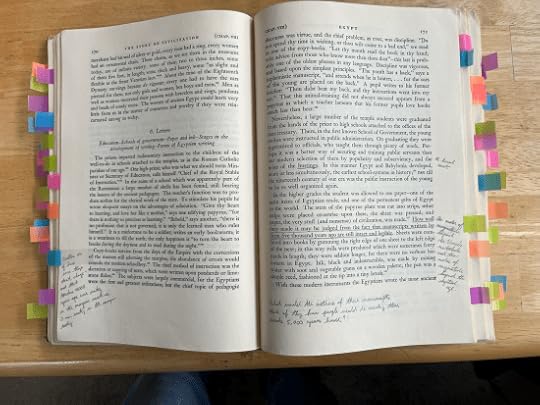Reading in the Margins: From Paper to E-Books and Back Again
The first e-book I ever read was Polaris by Jack McDevitt. It was June 2009, and I had just gotten my first Kindle. I was so excited. This was Isaac Asimov’s dream. In his essay, “The Ancient and the Ultimate,” he wrote about the evolution of books into their ultimate form. In his Foundation series of the 1940s, there were references to “book films” as if all the galaxy’s books and knowledge could be readily stored and accessed easily at the touch of a button. As a reader, that seemed exciting to me.
In his essay, Asimov went through the steps of evolution of the “electronic” book, with each step making it better and better. Wouldn’t it be great if it needed no power source? Wouldn’t it be amazing if, when you stopped reading, you could start up again at the exact place you left off? By the end of the essay, he described a marvel of technology, which, of course, was your standard paper book.
Since first using a Kindle in 2009, I have found myself following a similar arc. At first, e-books seemed exciting because of the instant gratification and because the books were so easily searchable. In 2013, I began using Audible and audiobooks as a way of letting me read more throughout the day while I did other things that required only a fraction of my attention. My use of audiobooks shot up, but my use of e-books waned, even as my use of paper books increased. Why? For me, it came down to two reasons, one practical, and one social.
When I read, I tend to take notes. I do this when I read fiction or nonfiction. I read a lot more nonfiction than fiction these days, but either way, I like making books my own, scribbling notes in the margins, on the endpapers, or at the head of chapters. While e-books allow one to make notes and highlights, the technology has always felt too limiting. I can’t see the note at the same time as I look at a page, but rather, I can see a reference to a note. Then, too, there is a kind of rigid structure to the notes. I can’t circle a passage and write a note around the border of the circle in an e-book, for instance. Because of these inadequacies, I’ve gradually given up on e-books, and have rarely purchased one in the last few years.
 Marginal notes in my copy of Our Oriental Heritage by Will Durant.
Marginal notes in my copy of Our Oriental Heritage by Will Durant.There is a social reason I prefer paper, too. I usually have a book with me wherever I go, above and beyond the audiobook I happen to be listening to. (Sometimes, I have the same paper copy of the audiobook so that I can scribble down notes. As much as I love audiobooks, the interface for notes is even worse than for e-books.) Granted, there are some benefits to e-books, which I jokingly enumerated way back in 2012. But one real failure is the ability for anyone else to see what I am reading.
It is my experience that readers enjoy talking about what they are reading and enjoy learning what other people are reading. Standing in line with an iPad is far less engaging than standing in line with a tattered copy of Les Misérables or One Man’s Meat. I want people to see what I am reading. It is a great icebreaker and a great way to socialize reading in general. I know that when I see someone reading in public, I am always curious about what they are reading. Heck, when I see someone on TV with bookshelves in the background, I pause whatever it is I am watching to see if I can make out any of the books on the shelves.
It’s true that lugging around Wind and Truth by Brandon Sanderson can be an exercise in strength training. At the same time, I don’t have to worry about what I’d do if my phone or Kindle battery ran out of battery.
Long-time readers might note that this is a change of heart for me. One of the things I used to like about e-books was that no one knew what I was reading, and so I didn’t have to interrupt my reading to answer questions about it. That was a good idea in theory, but in practice, people tended to ask “What are you reading?” more often than if I had the paper book out in front of me—for the obvious reason that one can see the paper book, but not the e-book. Besides, these days, I am always happy to talk about books.
Did you enjoy this post?
If so, consider subscribing to the blog using the form below or clicking on the button below to follow the blog. And consider telling a friend about it. Already a reader or subscriber to the blog? Thanks for reading!



